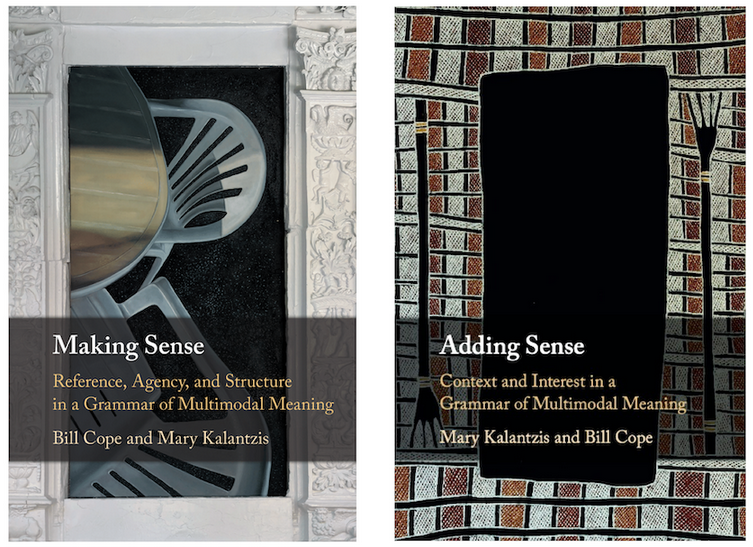Meaning Patterns’s Updates
Review of "Making Sense" and "Adding Sense" by Vanderlei Zacchi
-
Zacchi, Vanderlei J., "Review of Cope and Kalantzis, ‘Making Sense’ and ‘Adding Sense,’ Cambridge University Press, 2020,” DELTA: Documentação de Estudos em Lingüística Teórica e Aplicada, 38(2), 2022, doi: https://doi.org/10.1590/1678-460X202238256749.
[Extracts]
The publication of Making Sense (MS) and Adding Sense (AS) is the result of an ambitious project by Bill Cope and Mary Kalantzis. It is a monumental piece of work, divided into two volumes, ... [covering[ a wide range of subjects and topics, drawing from diverse fields of expertise, from artificial intelligence to philosophy to physics...
The main objective of these books is to put forward what the authors call transpositional grammar (MS, p. 13), based on the concept of design and with the ambitious goal to be “a grammar of everyday life” (p. 1), or a grammar that ties together “the meaning of everything” (p. 326). In order to explain the main aspects of this grammar, Cope and Kalantzis divide meaning into forms - text, image, space, object, body, sound, and speech - and functions - reference, agency, structure, context, and interest. Making Sense covers the three first meaning functions: reference, agency and structure, whereas Adding Sense deals with context and interest...
Cope and Kalantzis make it clear that they want to avoid language-centered accounts of meaning and to focus on multimodal ways of meaning making. They also suggest that the books do not need to be read in a specific order, since each section can be read separately (p. 5). Both books are structured in two main categories: Elements of a Theory and Examples and Discussion. The first one is divided into parts and sections, which are then subdivided into smaller subsections. Examples and Discussion further develops the ideas presented in Elements of a Theory...
All in all, these are two books more than worth reading. They might be of interest to a wide range of areas, but pragmatics and applied linguistics would probably benefit the most. Despite the depth and breadth of the discussions, simple, accessible language is used. The authors sometimes adopt a rather confessional tone, using themselves as examples in some cases. At the very beginning of Making sense, there is an interesting account of their relationship with the theorists they discuss: “We come to these folks at points where we feel it would be illuminating to bring them into the conversation. Each time we come back to them, it seems like we know them as friends” (MS, p. 3). Reading these two books sometimes feels just like that - like knowing Kalantzis and Cope as friends as well.



freemason
freemason symbol
freemason beliefs
what is a freemason
freemason meaning
freemason abbey
how to become a freemason
is donald trump a freemason
freemason handshake
freemason symbols
freemason ring
freemason gloves
freemason lodge near me
freemason abbey restaurant
whats a freemason
freemason logo
https://t.me/freemasonicc inbox us directly on Email,...Illuminatigm9@gmail.com or WhatsApp if you're interested (+233274691762)